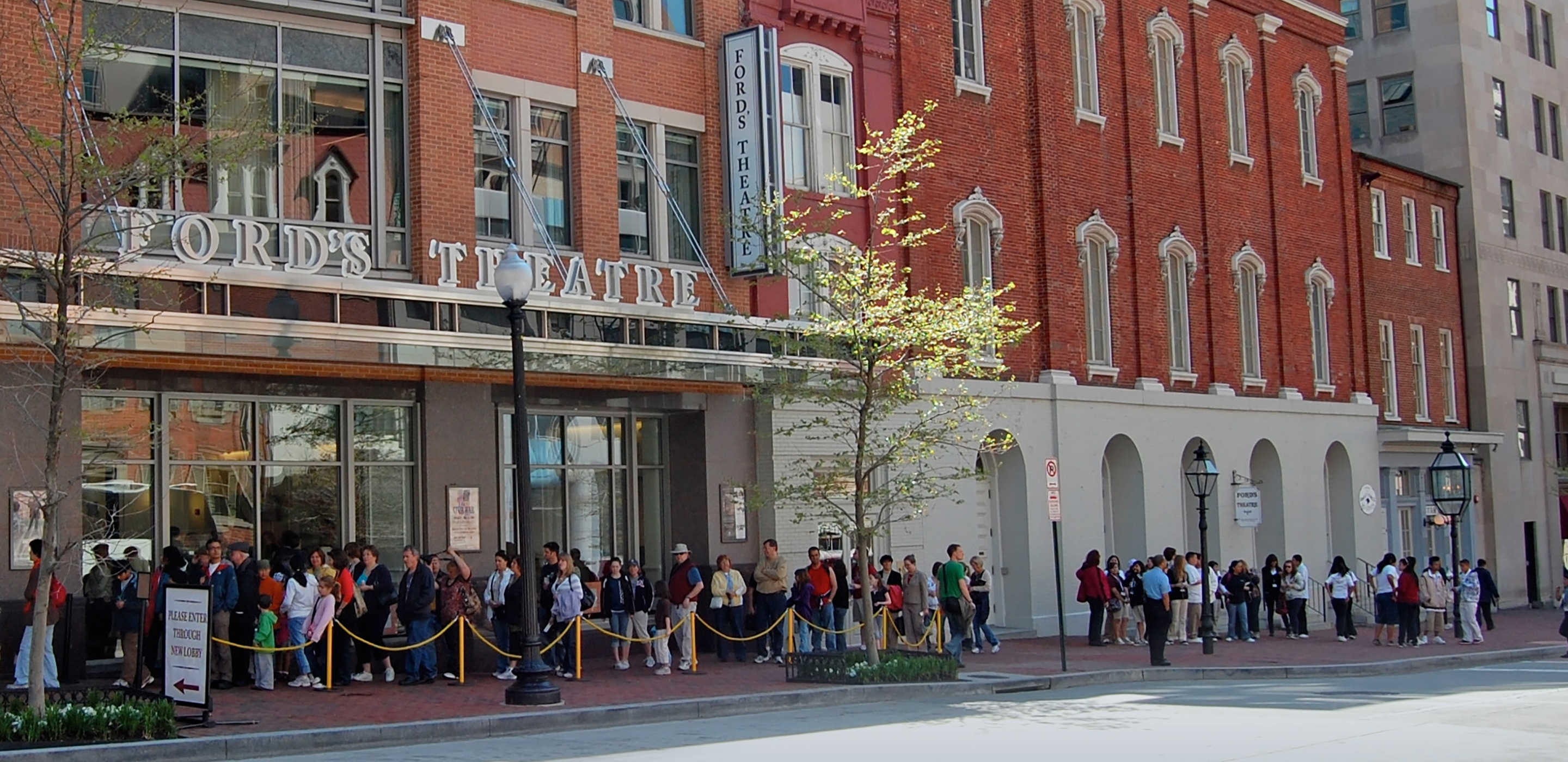
Take-Aways While Connecting Past & Present in the Ford’s Museum: Prototyping Sprint 2- Round 1 (Part 2)
In our second sprint of experiments in our prototyping project: Design Research at Ford’s Theatre (D.R.A.F.T.), our team addressed some of the more controversial decisions President Lincoln made while in office. We placed interactive doors in the museum that featured printed questions that could open to reveal facts about Lincoln’s presidency.
This March sprint helped our team test specific ideas on a number of levels. (To see the set-up for this experiment, take a look back at our Blog post here.)
Take Aways
1. Where are visitors ready to engage?
This testing validated what we had previously noticed: Visitors do not wish to pause to discuss when they are in transit from one location to another. In the theatre, they were too engaged in sitting for a ranger presentation, taking pictures of the Presidential Box or moving on to the next experience. Visitors seem to feel the theatre is a space for a more passive experience, not requiring them to examine ideas or articulate themes.
Waiting in line outdoors, on the other hand, remains an ideal spot to connect with our patrons. When Colleen worked directly with the students about what the ballot was and what they should do with it during their visit, staff in the museum could immediately see the higher level of student engagement.

If Colleen explained the ballots to the tour leaders only, the interaction was of lower quality. She overheard one student ask a teacher, “What is this?” (referring to the ballot) and the teacher replied, “I don’t know, just take it.”
This led the D.R.A.F.T. team to discuss how we might potentially prime the tour leaders or chaperones prior to the visit, so they are not having to deal with one more thing while trying to get students lined up and ready to go in.
2. Choice of formats (Ballots, iPads, rangers/docents)
During our discussion of content format, we noted a couple of interesting things. Students sometimes read the ballot even if they did not engage with any of the flip-up prompts within the museum. Several teachers asked for the ballot or even took pictures of the flip-up questions in the exhibit, prompting staff to consider handing out a ballot with an answer key.
During our debrief, we also considered in which ways the varying content presentation formats were more successful.

When is relevant too relevant? Framing sensitive content.
This particular prototype emphasized relevance and, in doing so, presented unexpected moments in visitor interaction.
While most tour leaders who turned down participating did so because of time, others said the ballot was too controversial.
Despite the fact that the ballot specifically highlighted Lincoln’s decisions, one tour leader perceived the text as being critical of the current president.
Another stated, “We want to learn about Lincoln and history, not talk about present-day issues.”
Another asked us about tweeting out a photo of the ballot, then changed her mind, telling us it was too controversial for social media.
Some visitors who turned down our ballot were still interested in it. For example, one leader asked Colleen to explain each of the questions to her, and how it related to Lincoln. This further validated the idea of crafting an answer key to hand out with the ballot for chaperones and others.
Upon reflection, the D.R.A.F.T. team also agreed we need to highlight Lincoln’s name on the ballot, perhaps even in the title, as those scanning it might not realize these were issues in the 1860s–hence, the relevance!

The team discussed how this prototype definitely conveyed relevance to today for the visitors, at times even seeming too politically charged. As Education Programs Manager Alex Wood said during the reflection, “We have a desire to connect the past to the present; we need to work through the challenges of that in [our current political] climate.”
Contextualization is important
When does something become too relevant? If we decide to continue with a ballot handout approach, especially in regards to the issues of Lincoln’s presidency, we need to carefully test how we frame and contextualize the content so that we can engage in dialogue, rather than shut out individuals who might infer bias.
What’s Next?
During the debrief, the group discussed trying more human intervention next time–that is, having more individual staff members stationed at different parts of the museum to answer questions and do discussions with visitors.
We also discussed trying this particular idea again, but next time reframing the question sheet to include more about the Lincoln presidency, as well as an answer key. This would allow us to test a slightly tweaked version and compare results.
Our next round of prototyping comes in April 2018, with two more rounds to follow in May. Stay tuned!
This project is made possible in part by the Institute of Museum and Library Services, grant number MA-10-16-0180-16.
David McKenzie was Ford’s Theatre Associate Director for Interpretive Resources. Before coming to Ford’s in 2013, he worked at the Jewish Historical Society of Greater Washington, The Design Minds, Inc. and at the Alamo.Chat with him on Twitter @dpmckenzie.
Kate Haley Goldman is an evaluator and strategist, currently working with Ford’s Theatre Society, Lower East Side Tenement Museum, AAAS and others. She works on projects with difficult cultural history, citizen science, digital storytelling, data-based decision-making, institutional capacity building and long-term visitor outcomes.

